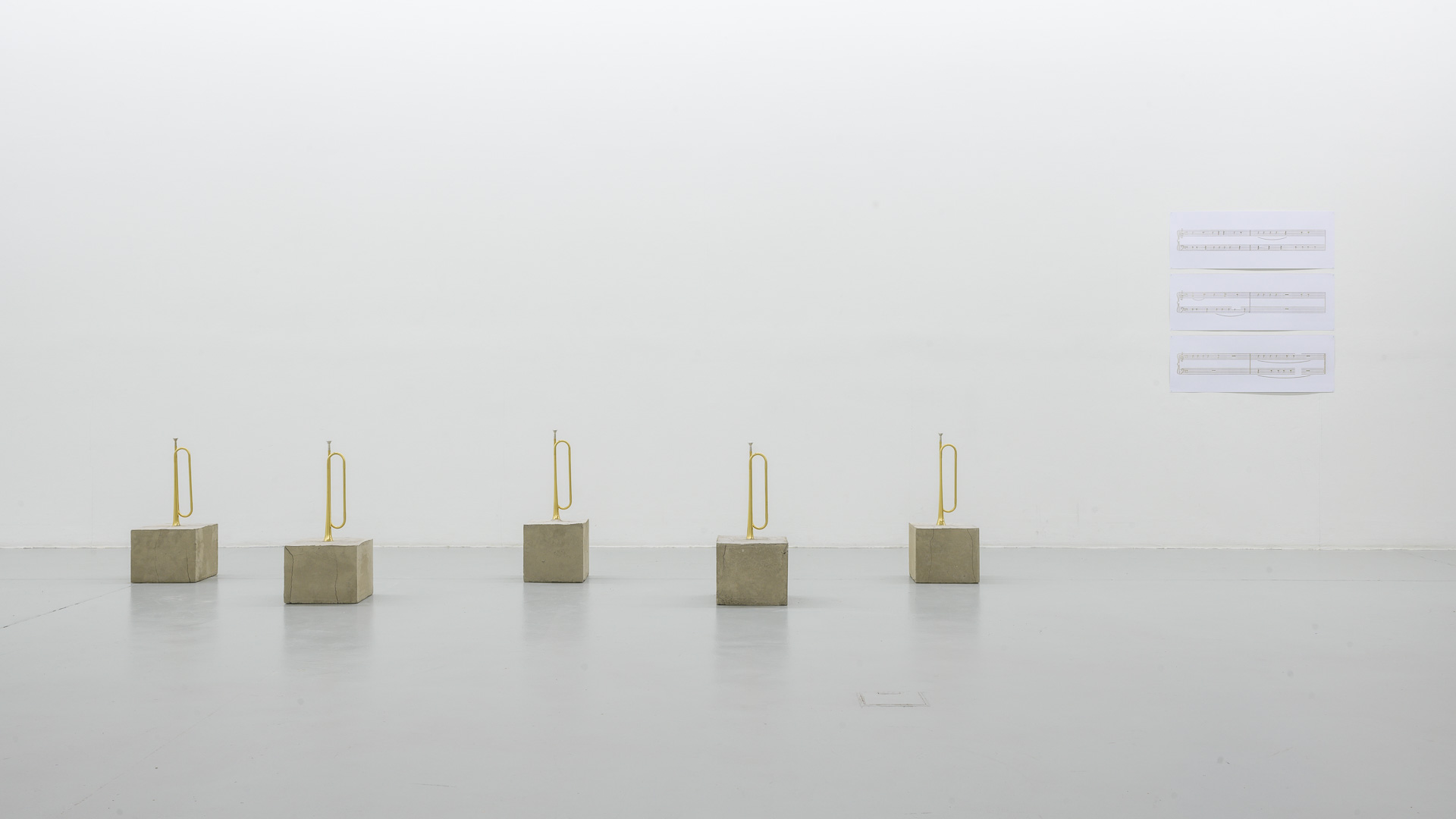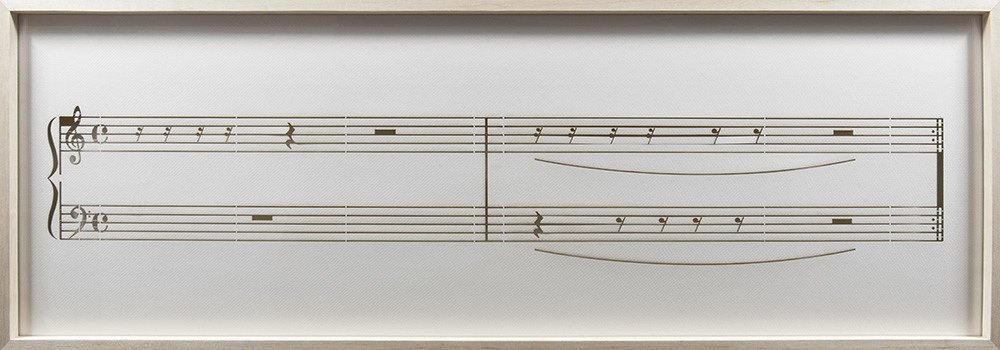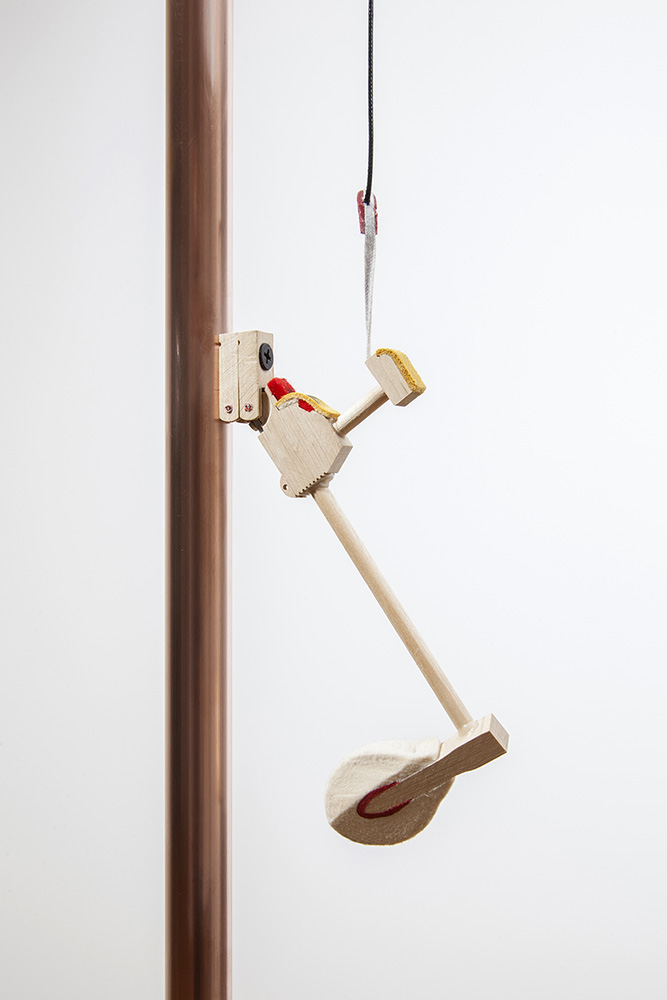“PENÚLTIMA PALABRA PROJECT”
Looking at a blackbird
Kunstverein Freiburg
Freiburg im Breisgau, Germany
2021
La fête de l'insignifiance
La Kunsthalle Mulhouse
Mulhouse, France
2020
Solo Show at FORO.SPACE Gallery
Bogotá, Colombia
2019














about penúltima palabra
The work of the Honduran artist Pavel Aguilar (1989) has opted for the translation or extrapolation of sound and visual images bordering on the object-sensory aspect of artists such as Glenda León (Cuba 1976), Rafael Lozano-Hemmer (Mexico, 1967 ) Oswaldo Maciá (Colombia, 1960) who have been exploring (each in a very unique way) the formal relationships between image and sound. At the same time, they display symbolic actions that bring into play acute tensions that go through the apparent harmony of things.
His first widely recognized work (Retransmission, 2011), is a videoperformance that was recently performed as a performance in the cities of Zurich and Bern within the framework of the “Golpe # 10” show. Using a military anti-riot clothing Pavel interprets the notes with the violin of the national anthem of his country.
At times, it interrupts the melodic balance of the action with strident distortions, recreating one of the daily pictures of the repressive context in which the work originates, shortly after the coup d’etat of 2009 when the democratic constitutional order was broken and triggered a series of violent actions by the government to contain social protest.
In those years the artist had an active participation in the EAT (School of Experimental Art) perhaps so far, the most enriching pedagogical experience for visual arts in Honduras. Since then, it has been deepening the potential of music with one foot outside, sometimes as autonomous language and sometimes, dialoguing with visual images.
In his short but significant journey he has collaborated with artists of known career as Carlos Amorales (Buró Fantasma, 2015) and more recently, he collaborated in 2018, during his stay at the residence of Flora ars + natura, with the Ecuadorian artist Manuela Ribadeneira, in the project called Harmonic Tremors.
Now Pavel presents this new body of work on the subject of thePENÚLTIMA PALABRA exhibition, at FORO.SPACE in Bogotá. A selection of works generated from parts from the craft of music that divert objects from their original utilitarian sense, creating the illusion of mechanics at the service of utopias, using sound, sculptural and graphic gestures that impeccably twist (as is his style) the bombastic mysticism of nationalisms.
In the ‘Hymns’ installation a group of cavalry trumpets appear immersed in concrete blocks, partially hiding the shape of these instruments. The deliberate cancellation contrasts with a series of portraits of musicians of different nationalities (including the artist), who were asked to sing the national anthems of their respective countries. In this case, the chauvinist liturgy of this type of music appears decontextualized in the informal execution carried out by the trumpeters who have arrived in Switzerland as immigrants.
In the same tonic of the previous work, ‘Silence’ takes up the metrics of the anthems of some extinct republics and proto-states. Here the musical notes are subtly cut out on an aseptic atmosphere recreating a network of nostalgic deviations and approaches, which revive the echoes of failed nation projects.
Something that is shown in a blunt and sharp way in the ‘Gbodi’ work in which a small mechanism programmed by the artist reproduces the notes of something that without being a hymn has much more forceful depth and depth power, since it is a lullaby Traditional in Zandé language with which the mothers of South Sudan have lulled millions of people during their childhood.
Surely, many of those same people who daily pursue the dream of reaching Western states: those territories, where “authentic” democracies are forged where their humanistic values only apply to those who have the privilege of citizenship.
Otherwise, there is only the fear of deportation and waiting, a countdown of seconds, minutes, hours, months, and years accumulated in daily fatigue and the customary weight of repetition, such as the trade of another piece of the exhibition: the piano hammer that does not generate any resonance and that the artist has programmed to bang a copper tube forever.
Finally, and with a sense opposite to that of the Hammer piece, two other works use the same object resource only that unlike the previous one, here the mechanics of repetition if it has explicitly utopian effects. The work ‘Tono’ generates the illusion of another piano hammer damaging one of the walls of the gallery.
Maybe a gesture that reflects anger or helplessness. The other example is the piece ‘Ola’ in which the artist uses the accumulation of discarded piano hammers to create a visual wave in which he has previously codified his disposition from the sound of the hymns of Honduras, Nicaragua, Palestine and South Sudan.
A work that invites us to think about the double standards of these silent and complexly structured mechanisms that hide behind integrationist policies that, with their pseudo humanism, on the one hand, feed the rejection of the thriving nationalist movements, and on the other, perfect forms of segregation, violence and expulsion against the most vulnerable inhabitants of the planet: those millions and millions of human beings that do not have you or vote, not even the penultimate word.
Adán Vallecillo, Tegucigalpa, July 2019.
His first widely recognized work (Retransmission, 2011), is a videoperformance that was recently performed as a performance in the cities of Zurich and Bern within the framework of the “Golpe # 10” show. Using a military anti-riot clothing Pavel interprets the notes with the violin of the national anthem of his country.
At times, it interrupts the melodic balance of the action with strident distortions, recreating one of the daily pictures of the repressive context in which the work originates, shortly after the coup d’etat of 2009 when the democratic constitutional order was broken and triggered a series of violent actions by the government to contain social protest.
In those years the artist had an active participation in the EAT (School of Experimental Art) perhaps so far, the most enriching pedagogical experience for visual arts in Honduras. Since then, it has been deepening the potential of music with one foot outside, sometimes as autonomous language and sometimes, dialoguing with visual images.
In his short but significant journey he has collaborated with artists of known career as Carlos Amorales (Buró Fantasma, 2015) and more recently, he collaborated in 2018, during his stay at the residence of Flora ars + natura, with the Ecuadorian artist Manuela Ribadeneira, in the project called Harmonic Tremors.
Now Pavel presents this new body of work on the subject of thePENÚLTIMA PALABRA exhibition, at FORO.SPACE in Bogotá. A selection of works generated from parts from the craft of music that divert objects from their original utilitarian sense, creating the illusion of mechanics at the service of utopias, using sound, sculptural and graphic gestures that impeccably twist (as is his style) the bombastic mysticism of nationalisms.
In the ‘Hymns’ installation a group of cavalry trumpets appear immersed in concrete blocks, partially hiding the shape of these instruments. The deliberate cancellation contrasts with a series of portraits of musicians of different nationalities (including the artist), who were asked to sing the national anthems of their respective countries. In this case, the chauvinist liturgy of this type of music appears decontextualized in the informal execution carried out by the trumpeters who have arrived in Switzerland as immigrants.
In the same tonic of the previous work, ‘Silence’ takes up the metrics of the anthems of some extinct republics and proto-states. Here the musical notes are subtly cut out on an aseptic atmosphere recreating a network of nostalgic deviations and approaches, which revive the echoes of failed nation projects.
Something that is shown in a blunt and sharp way in the ‘Gbodi’ work in which a small mechanism programmed by the artist reproduces the notes of something that without being a hymn has much more forceful depth and depth power, since it is a lullaby Traditional in Zandé language with which the mothers of South Sudan have lulled millions of people during their childhood.
Surely, many of those same people who daily pursue the dream of reaching Western states: those territories, where “authentic” democracies are forged where their humanistic values only apply to those who have the privilege of citizenship.
Otherwise, there is only the fear of deportation and waiting, a countdown of seconds, minutes, hours, months, and years accumulated in daily fatigue and the customary weight of repetition, such as the trade of another piece of the exhibition: the piano hammer that does not generate any resonance and that the artist has programmed to bang a copper tube forever.
Finally, and with a sense opposite to that of the Hammer piece, two other works use the same object resource only that unlike the previous one, here the mechanics of repetition if it has explicitly utopian effects. The work ‘Tono’ generates the illusion of another piano hammer damaging one of the walls of the gallery.
Maybe a gesture that reflects anger or helplessness. The other example is the piece ‘Ola’ in which the artist uses the accumulation of discarded piano hammers to create a visual wave in which he has previously codified his disposition from the sound of the hymns of Honduras, Nicaragua, Palestine and South Sudan.
A work that invites us to think about the double standards of these silent and complexly structured mechanisms that hide behind integrationist policies that, with their pseudo humanism, on the one hand, feed the rejection of the thriving nationalist movements, and on the other, perfect forms of segregation, violence and expulsion against the most vulnerable inhabitants of the planet: those millions and millions of human beings that do not have you or vote, not even the penultimate word.
Adán Vallecillo, Tegucigalpa, July 2019.
©2025 pavelaguilar.com